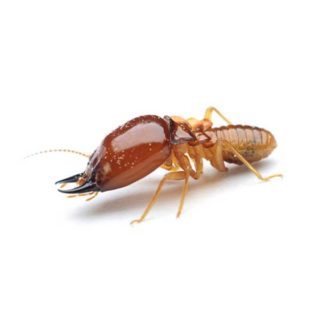Drywood Termites in McAlpin
Drywood termites are known for infesting dry wood without the need for contact with soil. Unlike their subterranean counterparts, drywood termites establish their colonies entirely within the wood they infest, creating intricate galleries for shelter and food storage. Signs of infestation include the presence of fecal pellets, swarming alates, and small kick-out holes in wood. Drywood termites are less prevalent compared to subterranean termites but can still cause significant damage to property if left unchecked.
Drywood Termite Habitat
Drywood termites thrive in warm, tropical climates with mild winters. Unlike other termite species, these termites have adapted to survive with minimal moisture, making them particularly suited for infesting dry, seasoned wood found in buildings, furniture, and other wooden structures. They typically target above-ground wood, often infesting the upper levels of buildings.
Drywood Termite Behaviors, Threats, or Dangers
Drywood termites pose significant threats and dangers to wooden structures and objects. Their ability to infest dry wood without needing contact with soil makes them particularly challenging to detect and control. Drywood termite colonies can cause extensive damage to homes, furniture, and other wooden materials, compromising their structural integrity and leading to costly repairs. To prevent or control a drywood termite infestation, it’s important to enlist the help of a professional termite exterminator.
Need help with Drywood Termite control?
Leave your information below and we’ll be in touch with a FREE quote!
"*" indicates required fields
*During normal business hours. After hours calls will be returned the next business day.



